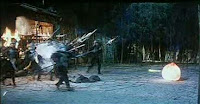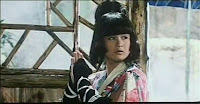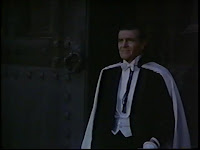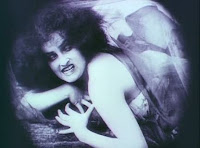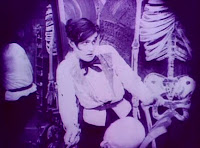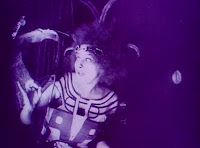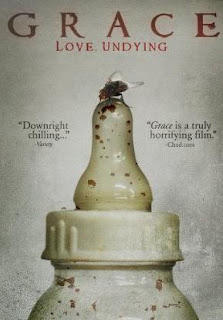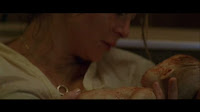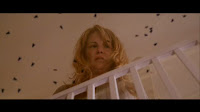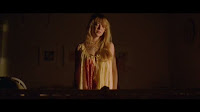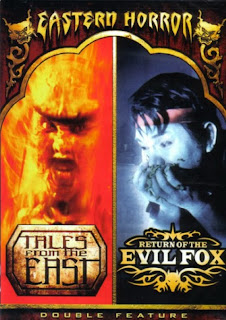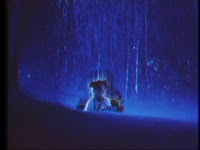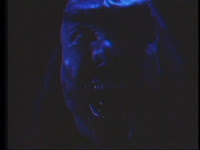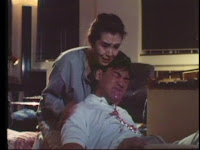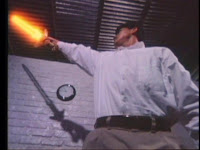Edited by: John Edgar Browning and Caroline Joan (Kay) Picart
First published: 2009
Contains spoilers
This volume, subtitled
“Essays on Gender, Race and Culture”, came into my awareness as a very good friend of the blog and general online bud – Nick Schlegel – is published in the book. The book is split into three parts and various chapters and, if you will indulge me, I will look at each chapter as they all had something within to make the reader think – whether you agreed or not with the hypothesis it explored.
The first part of the book was entitled
“Tackling Race, Gender and Modes of Narration in America”.
The first essay, by Gary D Rhodes, was
“Manly P Hall, Dracula (1931), and the Complexities of the Classic Horror Film Sequel”. Whilst the essay did look at the differing form of the horror sequel in the classic Universal period of film-making, what it primarily did was introduce us to Manly P Hall, his life and his vision of a sequel for the classic Universal
Dracula. Fascinating stuff.
“The Dracula and the Blacula (1972) Cultural Revolution” by Paul R Lebman and John Edgar Browning was an interesting look at both
Blacula and
Scream, Blacula, Scream. The authors argued that, far from a blaxploitation film the film actually was a crucial point in the black cultural revolution within cinema. I can agree with them to a point, and have no argument when it comes to William Marshall’s wonderful performance. However I feel that, despite the performance, his influence over the script and the fact that director William Crain was black, the film does still fall into blaxploitation. No doubt it opened the way, however, for films such as
Ganja and Hess - though even with that we had to wait until the 2006 release to see the film as it should have been and not in the blaxploitation cut that the studio foisted upon the world.
“The Compulsion of Real/Reel Serial Killers and Vampires: Toward a Gothic Criminology” by Caroline Joan (Kay) Picart and Cecil Greek argues that the general form of the serial killer movie captures the essence and form of the vampire movie – at least when focused on the male serial killer. The argument was okay as far as it went but certain things nagged. For instance, the film
Immortality is mentioned with a thought that it isn’t a vampire movie – I disagree – though such a proposition does not detract from the argument. Whilst the film
M is mentioned, the fact that one of the killers it is, allegedly, based on was called a vampire in the press is not mentioned and indeed films such as
Tenderness of the Wolves and
Bloodlust are not mentioned at all – despite the killers being named vampires by the press also.
Perhaps they were ignored as they befuddled the core sexuality argument – adding in paedophilic tendencies (M), homosexuality (Tenderness of the Wolves) and necrophilia (Bloodlust). Yet they are all highly effective serial killer films – albeit not American, given the focus of the book section. Does this mean that it was wrong to look at the serial killer explicitly within an American orientated section? Further, I would also have liked to see
Killer X mentioned as it ties the serial killer and vampire together with the Agent seeing the killers as vampiric creatures.
I’ll jump forward to
“When women Kill: Undead Imagery in the Cinematic Portrait of Aileen Wuornos” also by Caroline Joan (Kay) Picart and Cecil Greek as this argues that the film Monster, being about a female serial killer, is more Frankensteinean than vampiric. I cannot say, having not watched the film, but I felt that perhaps, by rote, the authors argued that the female serial killer generally was deemed as not vampiric – possibly partly due to the sexuality arguments they used in the previous essay (Wuornos, as the highlighted case, being a lesbian). However, it seemed an omission to look at that and not look at the wealth of material surrounding Erzsébet Báthory – a serial killer who was female, likely bisexual and who is tied inextricably with the vampire genre – though again, she is clearly not an American figure and the vast majority of the films surrounding her are European in origin.
Don’t get me wrong, the last two chapters I just mentioned were fascinating I can just see other directions that needed acknowledging and exploring.
“Blood, Lust and the Fe/Male Narrative in Bram Stoker’s Dracula (1992) and the Novel (1897)" by Lisa Nystrom argued that Stoker’s
novel had a misogynistic edge, fearing the ‘new woman’ as much as the mysterious foriegner, and went on to look at how this was illuminated visually within Coppola’s
film. I have sympathy for this feminist reading of the novel, one does feel that Stoker was as constrained by society as by his own opinion, remembering when the novel was written, and perhaps further investigation might show a desire from Stoker to embrace the concept of the new woman contradicted by his societal restrictions (though I may be being generous). I was less convinced by the idea that the vampiric brides and the vampire Lucy had their narrative stifled due to this – after all they were in no position to add narrative into the story, which was compiled by the humans, and Dracula himself adds nothing personally into the narrative.
“The Borg as Vampire in Star Trek: The Next Generation (1987-1994) and Star Trek: First Contact (1996), an Uncanny Reflection” by Justin Everett certainly made me think. Everett pointed out symbolism I perhaps had not seen but I remain unconvinced for two reasons. Firstly Star Trek noodles with its own lore and back history. Whilst the Borg queen was introduced in First Contact she did not exist or at least was not referenced (as far as I am aware) in TNG, indeed the brothers Lore and Data were able to take command of the (self aware) Borg, her quoted interaction with Locutus was introduced in the movie. This noodling makes symbolism a shifting feast within Trek. More so, I actually think that (the queen aside) the Borg are more zombie like and (whilst accepting that Romero was influenced by
I am Legend) Everett’s arguments work as well in respect of the zombie movie as the vampire movie, bar the queen who is more seductive and self aware than her drone counterparts.
The Next part of the book was called
“Working through change and Xenophobia in Europe.”
Santiago Lucendo’s
“Return Ticket to Transylvania: Relations between Historical Reality and Vampire Fiction” looked at the sources of Stoker’s imagined Transylvania – which has become our distorted view of Transylvania. A nice section and well written, Lucendo argues a projection of the anxieties of the West onto the East rather than then East invading the West.
I was much less impressed with the arguments presented in
“Racism and the vampire: the anti-Slavic premise of Bram Stoker’s Dracula (1897)” by Jimmie Cain. Clearly there is a definite tone to Dracula of the menace from the East and the foreigner who threatens the decorum of the British Empire. However the arguments presented rang hollow to me. I admit I haven’t read Oinas’ “Eastern European Vampires and Dracula” upon which much of the chapter seemed to rely. However it seemed to also rely on an argument that Dracula was based on Vlad Tepes – a theorem that, other than a footnote borrowed, has been generally dismissed.
Further to suggest that Stoker added staking as a vampire killing method because of Tepes and impalement is ludicrous. I suspect that Stoker was aware of
Varney the Vampire, which includes staking, but I know he was aware of and influenced by
Carmilla. This is what Carmilla has to say on vampire destruction:
“The body, therefore, in accordance with the ancient practice, was raised, and a sharp stake driven through the heart of the vampire, who uttered a piercing shriek at the moment, in all respects such as might escape from a living person in the last agony. Then the head was struck off, and a torrent of blood flowed from the severed neck. The body and head was next placed on a pile of wood, and reduced to ashes, which were thrown upon the river and borne away, and that territory has never since been plagued by the visits of a vampire.” Stoker knew of this lore and thus we need not look to the attrocities of Vlad Tepes for the source of staking, though one could look to the traditional folklore for earlier precedents if one wished. Finally if Stoker had been influenced by the experiences of George Stoker during the Russo-Turkish war, I’d have thought that Russia would have become the setting for the tale not Transylvania.
Paul Newland offered a new look at
Dracula AD 1972 in his essay
“The Grateful Un-Dead: Count Dracula and the Transnational Counterculture in Dracula AD 1972 (1972)”. This essay breathed new life into one of the more maligned of the
Hammer Dracula cycle films. However, I still think listening to a bunch of adults pretend to be kids and speak in painfully affected ‘street speech’ is tough – which actually forms one of the strands of his point.
The last essay in this section was
“Nosferatu the Vampyre (1979) as a Legacy of Romanticism”. In it Martina G lüke examines the strong romanticism elements in the 1979 version of
Nosferatu.
The final part of the book was the part I was most anticipating and was entitled
“Imperialism, Hybridity, and Cross-Cultural Fertilisation in Asia.”
With
“Death and the Maiden: The Pontianak as Excess in Malay Popular Culture”, Andrew Hock—Soon Ng explored the symbolism within the Pontianak – a Malay form of vampire. The Pontianak and Kuntilanak are essentially the same creature and the author seemed to have the same issue that I have had, that the vacillation between the traditional vampire-like folklore and the form of the creature as a ghost makes it difficult, in some filmic versions, to class the Pontianak as a vampire in a Western sense. Though I have not seen the main film he concentrated on, ‘Pontianak Harum Sundal Malam’, the essay was informative and offered an insightful thought on vampires generally:
“Vampires are ambiguous signifiers, whose meanings shift according to historical and cultural changes.”
It was nice to see some exposure for
Zinda Laash in Sean Moreland and Summer Pervez’
“Becoming-Death: The Lollywood Gorhic of Khwaja Safraz’s Zinda Laash (Dracula in Pakistan [US Title], 1967)”. However I did feel that they perhaps read too much into the film and certainly I disagreed with their interpretation of the ending. They suggested that the hero prays to God and then divine light kills the vampire, obviously bringing an Islamic sensibility to the film underlined by the vampire's turning to dust mirroring the Qur’an. There is no doubt that the film is Islamic in direction – the entire 'becoming the vampire' story underlines that. However the film is essentially a remake of
Horror of Dracula and the prayer to God was the Islamic version of Cushing putting two candlesticks together to make a cross. The so called divine light was sunlight let in after the hero knocks a shutter open and, whilst in the interior shot it clearly is studio lights, this is underlined by the hero walking into a daytime exterior shot in the next scene. This was just a rendition of the Horror of Dracula ending – wield cross (with clear divinely inspired impact on the vampire), open curtain, sunlight kills vampire who turns to dust and say prayer, open (albeit accidentally, so maybe God’s hand was in it) shutter, sunlight kills vampire who turns to dust.
Perhaps reading this film in terms of Deleuze’s cinema theory was going a bit far on a film that has, in my opinion, moments of poor direction but it was an interesting theory regarding a film I see as a flawed jewel.
In
"Modernity as Crisis: Geong Si and Vampires in Hong Kong Cinema”, Dale Hudson looks at the Geong Si or Kyonsi movie, and whilst mentioning
Mr Vampire concentrates more on
Vampire Vs Vampire,
A Bite of Love and
Doctor Vampire. These show a mixture of the kyonsi film with the western vampire – to one degree or another – and the result is an insightful look at how the films mirrored social consciousness and political change in Hong Kong. My only real criticism was it would have been pertinent to also include the film
Exorcist Master as I feel it would have added further weight to the theorem.
In
“Enter the Dracula: The Silent Screams and Cultural Crossroads of Japanese and Hong Kong Cinema”, Wayne Stein takes us on a whirlwind trip through both Hong Kong and Japanese vampire cinema. He argues that the first fusions of Eastern and Western vampire cinema did not work but, as the film industries found their own path it led to an effective fusion (in the
Twins Effect, for instance) as the cultural aspects of the home country were taken into account. It is an interesting essay, though I would disagree that the TOHO films do not work – they may not have been popular but I think they got stronger and stronger. This segues neatly to the next essay.
“Identity Crisis: Imperialist Vampires in Japan” by Nicholas Schlegel concentrates in entirety on the three TOHO vampire films;
Bloodthirsty Doll.
Bloodthirsty Eyes and
Bloodthirsty Roses. However I won’t comment further on the essay as I reserve thoughts and debates for a promised discussion (which will also include the merits of various Stephen King adaptations) over a pint, if myself and Nick ever find ourselves with the opportunity to do so.
The final essay was
“The Western Eastern: Decoding Hybridity and CyberZen Goth(ic) in Vampire Hunter D (1985)” by Wayne Stein and John Edgar Browning. Obviously this was a look at
Vampire Hunter D and was a welcome discussion with regards the anime.
As I sat down to read this I decided to write the review piecemeal as I read each essay. Indeed one might argue it is more critique than review and I apologise, therefore, for the length. However this underlines the fact that the book is very worthwhile. I might not agree with the directions and theorems of each contributor but, it is safe to say, each contributor made me think. A welcome book for any serious genre fan, scholarly and yet absolutely accessible.
8.5 out of 10.
 Authors: Dacre Stoker & Ian Holt
Authors: Dacre Stoker & Ian Holt





